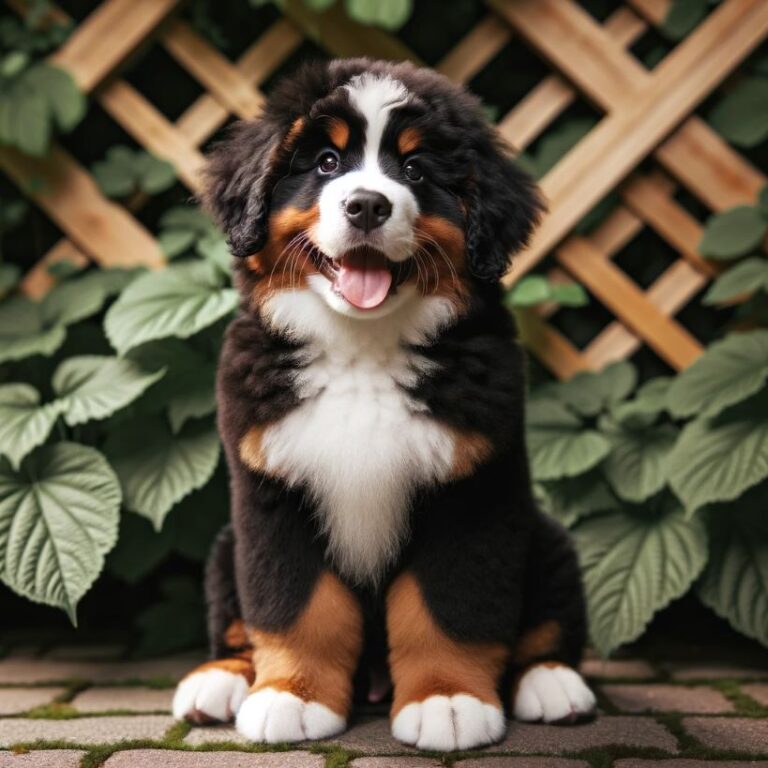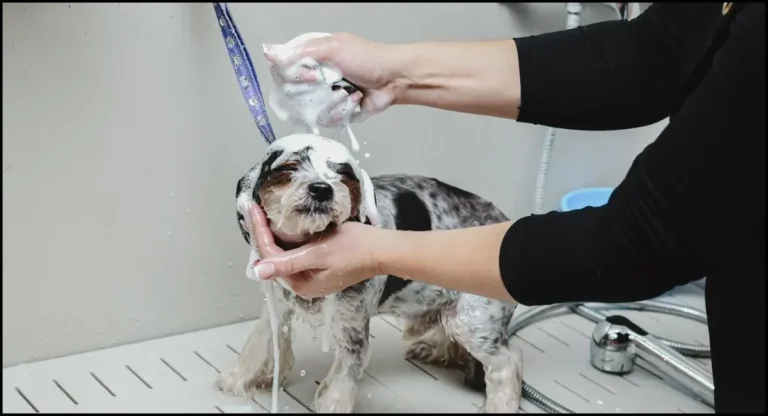Sedating A Dog For Nail Cutting

Trimming a dog’s nails is a vital part of their grooming routine, but it can be a stressful experience for both the dog and the owner. This article is about sedating a dog for nail cutting and the need for sedating dogs during nail cutting arises from several factors:
- Anxiety and Fear in Dogs: Many dogs experience anxiety or fear during nail trimming. This can be due to past negative experiences, the sensation of nail cutting, or the sound of clippers. A stressed dog can become unpredictable, making it challenging to safely trim their nails.
- Safety for the Dog and the Groomer: A dog that is moving, squirming, or trying to escape can easily get injured during nail trimming. Similarly, the person trimming the nails is at risk of being bitten or scratched. Sedation can help keep the dog calm and still, ensuring a safer grooming process.
- Pain Management: In some cases, dogs may have sensitive paws or may have had previous injuries that make nail trimming painful. Sedation can help alleviate discomfort during the procedure.
- Ease of Grooming: For dogs with thick, dark, or particularly long nails, the grooming process can be lengthy and difficult. Sedation can make it easier to handle these cases effectively and efficiently.
- Behavioral Issues: Dogs with behavioral problems or extreme nervousness might not tolerate nail trimming without sedation. In such cases, sedation becomes necessary for the well-being of the dog.
Pros and Cons of Sedating a Dog for Nail Trimming
Here is a table analyzing the Pros and Cons of sedating dog for nail clipping:
| Pros | Cons |
|---|---|
| Reduces stress and anxiety in dogs during nail trimming | Risk of side effects from sedatives, such as allergic reactions or respiratory issues |
| Ensures safety for both the dog and the groomer | Requires professional supervision, usually by a veterinarian, which can be more costly |
| Alleviates pain, especially in dogs with sensitive paws or previous injuries | Not a solution for regular grooming; dependency on sedatives is not ideal |
| Facilitates easier grooming, particularly for dogs with thick or long nails | Sedation can mask underlying behavioral issues that require training and conditioning |
| Necessary for dogs with severe behavioral issues that make nail trimming without sedation impossible | Recovery time post-sedation can be inconvenient and requires monitoring |
This table provides a balanced view of the benefits and drawbacks of using sedation for dog nail trimming. It highlights that while sedation can offer significant advantages in terms of safety and stress reduction, it also comes with potential risks and limitations that should be carefully considered.
Types of Sedatives for Dog Nail Cutting
Here is a table analyzing different types of sedatives for dog nail cutting and their unique advantages and disadvantages:
| Type of Sedative | Advantages | Disadvantages |
|---|---|---|
| Mild Sedatives (e.g., Oral Medications) | Less invasive, can be administered at home, suitable for mild anxiety | May not be effective for all dogs, risk of insufficient sedation |
| Moderate Sedatives (e.g., Injectable Medications) | More effective for moderate to severe anxiety, quicker onset of action | Requires professional administration, potential for stronger side effects |
| Strong Sedatives (e.g., General Anesthesia) | Provides complete sedation, suitable for extremely anxious dogs or complex cases | High risk of complications, requires professional monitoring, recovery time needed |
This table outlines the varying levels of sedation, from mild to strong, each with its own set of advantages and drawbacks. The choice of sedative depends on the dog’s specific needs, the severity of their anxiety or behavioral issues, and the complexity of the grooming procedure.
How to Prepare Your Dog for Sedation Before Nail Cutting
Preparing your dog for sedation before nail cutting is a crucial step to ensure the process is as smooth and safe as possible. Here are some key steps to follow:
- Consult Your Veterinarian: Before considering sedation, consult with your veterinarian. They can assess your dog’s health, discuss the need for sedation, and recommend the most appropriate type based on your dog’s age, breed, health condition, and anxiety level.
- Fasting Before Sedation: If your dog is going to be sedated, your veterinarian may advise fasting for a certain period before the appointment. This is typically done to reduce the risk of vomiting and aspiration during sedation. Follow the vet’s instructions about withholding food and water.
- Familiarize Your Dog with Nail Trimming: Gradually acclimatize your dog to the sensations associated with nail trimming. Regularly handle their paws and introduce them to the nail clippers or grinder in a non-threatening way. Treats and positive reinforcement can be very helpful.
- Create a Calm Environment: On the day of the nail cutting, create a calm and quiet environment for your dog. Avoid stressful situations or overexcitement. This can help minimize their anxiety before the procedure.
- Provide a Comfortable Transport: Ensure that the transport to the vet or grooming facility is comfortable and stress-free. Use a familiar crate or carrier and bring along a favorite blanket or toy for comfort.
- Administer Prescribed Medications: If your vet has prescribed any pre-sedation medication to be given at home, administer it exactly as directed.
- Monitor for Reactions: After administering any medication, monitor your dog for any adverse reactions and contact your vet if you notice anything unusual.
- Keep Your Dog Calm Post-Procedure: After the nail cutting, your dog may still be under the influence of the sedative. Keep them in a quiet, comfortable place where they can rest and recover safely.
- Post-Sedation Care: Follow any post-sedation care instructions provided by your vet. This may include monitoring for any side effects, providing water and food at certain intervals, and limiting physical activity until they are fully recovered.
- Regular Conditioning: If possible, work on conditioning your dog to nail trimming regularly, so that the need for sedation can be reduced over time.
Remember, each dog is unique, and what works for one might not work for another. The key is patience, care, and following professional guidance to ensure your dog’s wellbeing.
Recognizing Signs of Anxiety in Dogs During Nail Cutting
Recognizing signs of anxiety in dogs during nail cutting is crucial for ensuring the safety and well-being of your pet. Dogs express discomfort and fear in various ways, and understanding these signals can help you respond appropriately. Here’s what to look for:
- Physical Signs:
- Shaking or Trembling: A clear sign of fear or anxiety.
- Panting or Drooling: Excessive panting or drooling when not overheated or thirsty can indicate stress.
- Ears Back: If the dog’s ears are pinned back against their head, it’s often a sign of discomfort.
- Tail Tucking: A tucked tail can indicate fear or submission.
- Whale Eye: When a dog shows the whites of their eyes (sclera), it’s a sign of unease.
- Yawning or Licking Lips: These can be calming signals, indicating that the dog is trying to soothe itself.
- Behavioral Signs:
- Avoidance: Hiding, trying to escape, or turning away when it’s time for nail cutting.
- Aggression: Growling, snapping, or biting are defensive behaviors in response to fear.
- Freezing: The dog may become very still, a sign that they are very uncomfortable.
- Refusing Food: A stressed dog might ignore even their favorite treats.
- Vocalizations:
- Whining or Barking: Vocalizing more than usual can be a sign of distress.
- Howling: Some dogs may howl when they are particularly anxious.
- Physiological Changes:
- Increased Heart Rate: You might notice a rapid heartbeat.
- Shedding: Some dogs shed more when they are stressed.
Tips for Managing Anxiety:
- Desensitization: Gradually get your dog used to the sensation of having their paws and nails touched.
- Positive Reinforcement: Use treats and praise to create a positive association with nail cutting.
- Comfortable Environment: Create a calm space for nail trimming.
- Professional Help: If your dog’s anxiety is severe, consult a professional dog trainer or behaviorist.
- Sedation: In extreme cases, and under veterinary guidance, sedation might be necessary.
Recognizing and addressing these signs of anxiety can make nail cutting a more manageable experience for both you and your dog. Always approach nail trimming with patience and empathy, and never force your dog if they are showing signs of extreme distress.
Post-Sedation Care
Post-sedation care for dogs following nail trimming is crucial to ensure they recover safely and comfortably from the effects of the sedative. Here’s a guide to what you should do after your dog has been sedated for nail trimming:
- Monitor Recovery: After the procedure, closely monitor your dog as the sedative wears off. This includes watching for any unusual behavior or signs of distress.
- Keep Them Comfortable: Provide a quiet, warm, and comfortable space for your dog to rest. This area should be safe and familiar to them, free from loud noises or disturbances.
- Limit Physical Activity: Your dog might be unsteady or drowsy as the sedation wears off. Prevent them from climbing stairs, jumping on furniture, or engaging in any strenuous activity until they are fully alert and coordinated.
- Offer Water and Food Gradually: Depending on your veterinarian’s advice, offer a small amount of water and a light meal a few hours after returning home. Some dogs might experience mild nausea after sedation, so it’s important to reintroduce food and water slowly.
- Check for Hydration: Ensure your dog remains well-hydrated. You can check for dehydration by gently lifting the skin on the back of your dog’s neck; if it doesn’t fall back into place quickly, they may need more fluids.
- Watch for Side Effects: Be vigilant for any side effects of the sedative, such as vomiting, diarrhea, excessive drooling, difficulty breathing, or extreme lethargy. If you notice any concerning symptoms, contact your veterinarian immediately.
- Keep Them Warm: Sedation can lower a dog’s body temperature. Provide blankets or a warm (not hot) heating pad if necessary, especially for small or short-haired breeds.
- Avoid Leaving Them Alone: Don’t leave your dog unsupervised until they have fully recovered from the effects of the sedative. This may take several hours or even longer for some medications.
- Gradual Return to Normal Routine: Once your dog starts to show signs of their usual energy levels and behavior, you can gradually return to their normal routine. However, keep an eye on them for at least 24 hours after sedation.
- Follow-Up With Your Vet: If you have any concerns or if your dog doesn’t seem to be recovering as expected, contact your vet for advice.
Remember, every dog reacts differently to sedation, and recovery times can vary. Patience and attentive care during the post-sedation period are key to ensuring your dog’s well-being.
Risks and Precautions
Here is a table analyzing the risks and precautions when sedating dogs for nail trimming:
| Risks | Precautions |
|---|---|
| Allergic Reactions to Sedatives | Consulting a vet before choosing a sedative, testing for allergies if necessary |
| Respiratory Complications | Monitoring breathing during and after sedation, having emergency support ready |
| Over-sedation | Correct dosage as per vet’s instruction, considering dog’s weight and health condition |
| Gastrointestinal Distress | Fasting before sedation, gradual reintroduction of food post-sedation |
| Delayed Recovery | Supervised recovery in a safe environment, watching for prolonged sedation effects |
| Behavioral Changes Post-Sedation | Observing behavior changes, consulting a vet if there are significant or prolonged changes |
This table highlights the potential risks involved in sedating dogs for nail trimming and the corresponding precautions that should be taken. It’s important to work closely with a veterinarian to mitigate these risks and ensure the safety and well-being of the dog throughout the process.
Training Your Dog to Tolerate Nail Cutting Without Sedation
Training your dog to tolerate nail cutting without sedation involves patience, gradual desensitization, and positive reinforcement. Here’s a step-by-step guide to make nail trimming a stress-free experience for both you and your dog:
Step 1: Start with Desensitization
- Touching the Paws: Begin by gently touching your dog’s paws regularly. Do this during calm moments, like when they are relaxed or sleepy.
- Pressing the Pads and Toes: Once they are comfortable with paw touching, start pressing on their pads and toes, mimicking the pressure of nail cutting.
- Introducing the Clippers: Let your dog see and sniff the nail clippers or grinder. Associate this tool with positive experiences, like treats or praise.
Step 2: Create Positive Associations
- Use Treats and Praise: Reward your dog with treats and affection every time they allow you to touch their paws or when they show calm behavior around the nail trimming tools.
- Short Sessions: Keep the training sessions short and positive. Avoid pushing your dog too far too fast.
Step 3: Gradual Introduction to Trimming
- Simulate Trimming: Without actually cutting, simulate the action of trimming by placing the clippers near their nails and applying slight pressure.
- Trim One Nail at a Time: When your dog seems comfortable, trim just one nail. Reward them immediately afterward.
Step 4: Regular Practice
- Routine: Make nail trimming part of a regular routine. Consistency helps your dog understand that it’s a normal part of their life.
- Patience is Key: Some dogs may take longer to get used to nail trimming. Stay patient and keep the experience positive.
Step 5: Reinforce Calm Behavior
- Stay Calm: Your dog can pick up on your emotions. Stay calm and composed during nail trimming sessions.
- Positive Reinforcement: Continue to use treats and praise to reinforce calm behavior.
Step 6: Addressing Setbacks
- Take a Break: If your dog gets anxious, take a break and try again later. Don’t force the process.
- Back to Basics: If necessary, go back to previous steps and rebuild your dog’s comfort level.
Step 7: Consulting a Professional
- Professional Help: If you’re struggling, consider consulting a professional dog trainer. They can offer specific advice tailored to your dog’s needs.
The key to training your dog to tolerate nail cutting without sedation is to build trust and associate the experience with positive outcomes.
Emergency Measures if Complications Arise
Here is a table analyzing emergency measures to take if complications arise during sedation for dog nail cutting:
| Complication | Emergency Measures |
|---|---|
| Difficulty Breathing | Ensure airway is clear, contact vet immediately, perform CPR if trained |
| Excessive Drooling | Monitor for choking, keep dog calm, contact vet |
| Extreme Lethargy or Unresponsiveness | Stimulate gently, check for consciousness, call vet immediately |
| Seizures | Keep dog safe from injury, do not restrain, call vet |
| Pale Gums | Check circulation, keep warm, contact vet urgently |
| Vomiting or Diarrhea | Prevent dehydration, don’t offer food or water, seek vet assistance |
This table outlines key emergency measures for various complications that may arise during sedation. In any of these situations, it is crucial to act quickly and seek veterinary assistance immediately. Being prepared and knowing the appropriate steps to take can make a significant difference in ensuring the safety and well-being of your dog in these critical situations
Cost Analysis of Professional vs. At-Home Sedation
Here’s a table analyzing the cost considerations of professional versus at-home sedation for dog nail trimming:
| Type of Sedation | Advantages | Disadvantages | Estimated Cost |
|---|---|---|---|
| Professional Sedation | Performed by trained professionals, higher safety and efficacy, monitoring equipment available | More expensive, requires transportation and more time | Varies widely depending on the vet clinic and region, but generally higher due to professional service |
| At-Home Sedation | Less expensive, convenient, no need for travel | Risks if not done correctly, lack of professional monitoring | Cost of sedatives prescribed by a vet, generally lower than professional services |
This table provides a comparative overview of the costs and other factors associated with professional and at-home sedation for dog nail trimming. While professional sedation tends to be more expensive.
Legal and Ethical Considerations
Here’s a table analyzing the legal and ethical considerations in sedating dogs for grooming procedures:
| Consideration Type | Details |
|---|---|
| Legal: Prescription and Administration | Sedatives must be prescribed by a licensed vet; administering without guidance is illegal in many regions. |
| Legal: Record Keeping | Accurate records of all administered medications, including dosage and response, must be maintained. |
| Legal: Liability | Informed consent from owners is required; improper use can lead to liability for negligence or malpractice. |
| Ethical: Animal Welfare | Sedation should only be used when necessary and should consider the animal’s stress and well-being. |
| Ethical: Use of Sedatives | Sedatives should not replace training or behavior management; use the minimum effective dosage. |
| Ethical: Owner Education | Owners should be educated about grooming processes and post-sedation care, including potential side effects. |
| Ethical: Professional Responsibility | Those administering sedatives should be trained and competent, with emergency protocols in place. |
This table highlights the important legal and ethical aspects that must be considered when sedating dogs for grooming. These considerations ensure the safety and well-being of the animal, compliance with legal regulations, and responsible professional conduct.
How Often Should You Trim Your Dog’s Nails?
Determining how often you should trim your dog’s nails depends on several factors including their lifestyle, breed, age, and the rate at which their nails grow. Here’s a general guideline:
Factors Influencing Nail Growth
- Activity Level: Dogs that are more active, especially those who walk frequently on hard surfaces like concrete, may naturally wear down their nails and require less frequent trimming.
- Breed and Size: Some breeds have faster nail growth. Larger dogs may need more frequent trimming than smaller breeds.
- Age: Older dogs might be less active, leading to less natural wear and possibly more frequent trimmings.
General Guidelines
- Trimming Frequency: As a general rule, dog nails should be trimmed every 3-4 weeks. However, this can vary greatly depending on the factors mentioned above.
- Length Check: The ‘clicking’ sound of your dog’s nails on hard floors is a good indicator that it’s time for a trim. Ideally, a dog’s nail should not touch the ground when they are standing.
- Comfort and Mobility: Long nails can cause discomfort and even pain for your dog. They can also affect their gait and lead to skeletal damage over time.
- Dewclaws: Don’t forget the dewclaws (if your dog has them), as these nails don’t wear down naturally and can grow into the paw pads if neglected.
Tips for Nail Trimming
- Regular Inspection: Regularly check your dog’s nails to assess their length and health.
- Gradual Introduction: If your dog is not used to nail trimming, gradually acclimate them to the process.
- Use Proper Tools: Use the appropriate nail trimming tools and learn the proper technique to avoid hurting the quick (the vascular part of the nail).
- Reward Your Dog: Make the experience positive with treats and praise.
- Professional Assistance: If you’re uncomfortable trimming your dog’s nails, consider seeking help from a professional groomer or veterinarian.
Innovative Tools and Techniques for Easier Dog Nail Trimming
Here’s a table analyzing various innovative tools and techniques for easier dog nail trimming, along with their uses and advantages:
| Tool/Technique | Uses | Advantages |
|---|---|---|
| Rotary Tools/Dremel | Gently grinds nails, reducing risk of hitting the quick | Smooth finish, less stressful for the dog |
| Guillotine Clippers | Ideal for small-medium dogs, easy maneuvering | Easy to use, less risk of overcutting |
| Scissor Clippers | Best for larger dogs with thicker nails, clean cut | Effective for tough nails |
| Illuminated/Magnifying Clippers | Illuminate/magnify the nail for better visibility | Increases precision, reduces accidents |
| Automatic Nail Filers | Files down nails smoothly after cutting | Eliminates sharp edges, enhances comfort |
| Quick Finder Clippers | Detects the quick and alerts to prevent injury | Increases safety, peace of mind |
| Distraction Techniques | Keeps dog distracted and calm during trimming | Reduces anxiety, simplifies the process |
| Grooming Tables with Restraints | Stabilizes dog, making trimming easier | Provides a secure grooming environment |
| Paw Holders | Holds the paw in place, reducing movement | Facilitates easier handling |
| Nail Caps | Covers trimmed nails to prevent scratching | Protects against scratching, post-trim |
This table highlights how advancements in grooming tools and methods can significantly ease the process of trimming a dog’s nails. These innovations not only enhance the safety and efficiency of nail trimming but also make the experience more comfortable for the dog.
conclusion
Sedating a dog for nail cutting is a practice that should be approached with caution and understanding.
It is primarily considered in cases where dogs exhibit extreme anxiety, fear, or behavioral issues that make traditional nail trimming dangerous or impossible.
While sedation can greatly ease the process and ensure the safety of both the dog and the handler, it is not without its risks and challenges.
The decision to sedate a dog for nail cutting should always involve a veterinarian who can assess the individual dog’s health, behavior, and needs.
The type of sedative used, the dosage, and the method of administration should be carefully chosen based on the dog’s specific circumstances.
It is crucial to balance the benefits of stress reduction and safety with the potential risks of sedation, such as allergic reactions, respiratory issues, and the need for close monitoring.
Related Posts:
Read More: Why Does My Dog Open His Mouth When I Pet Him? 7 Reasons
Read More: Why Does My Dog Keep Sniffing My Legs: 5 Common Reasons
Read More: Why Does My Dog Bite Me In The Morning? 2 Way To safe From
Read More: Why Are My Dogs Balls Black? Best Number 1 Answer
Read More: Why Do Dogs Like Peanut Butter?
Read More: Why Does My Dog Nibble My Ear? 10 Reasons
Read More: Why Does My Dog Move Its Bed Around?
Read More: Why Does My Dog Bring Me His Food?
Read More: Why Does My Dog Lay His Head Over My Neck? 7 Reasons





